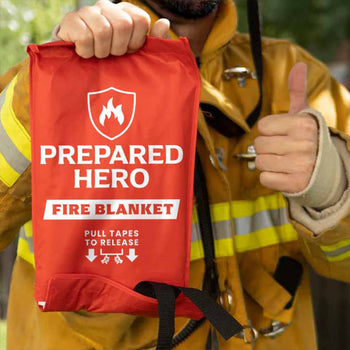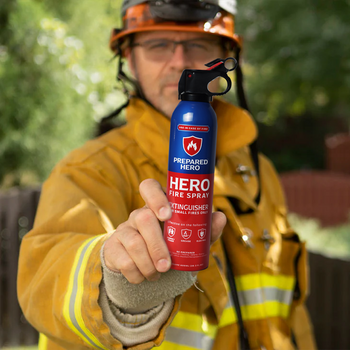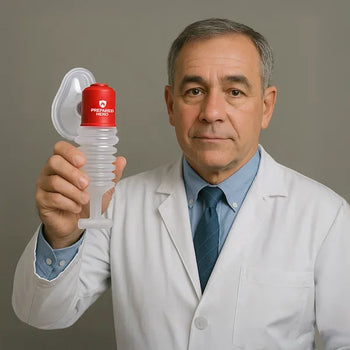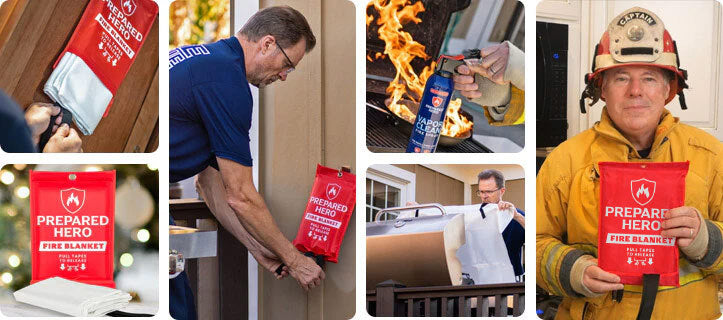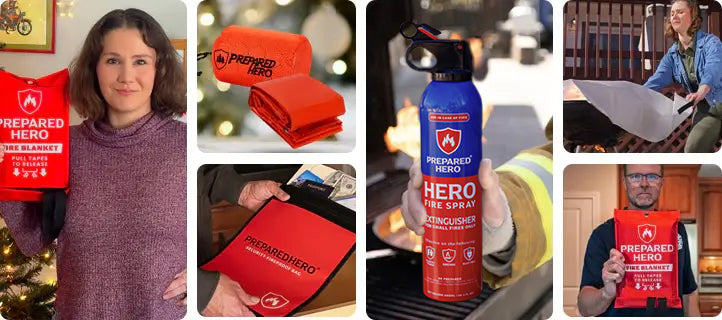Where you put your smoke detectors matters just as much as installing them. Proper placement makes sure they can detect...
Using a fire extinguisher can be intimidating, especially if you do not have training. While having a fire extinguisher at home or your workplace helps, it’s not enough. Knowing how to use a fire extinguisher could mean the difference between life and death.
This is where the PASS acronym comes in. Made specifically for fire extinguishers, this protocol is easy to remember and useful when panic takes over. But what exactly does PASS mean? How do you use it to put out fire? Are there any guidelines you should follow to implement it properly?
In this post, we’ll talk about PASS for fire extinguishers and how it can help you during a fire emergency.
What Does PASS Stand For in Fire Safety?

While everyone hopes to never use a fire extinguisher, that’s not the case. According to the NFPA, 1.5 million fires occur in the US each year. A fire department responds to a fire every 21 seconds, while a fire-related death occurs every three hours and 14 minutes.
Fire extinguishers are your first line of defense during a fire emergency. However, there’s no point in owning a fire extinguisher if no one knows how to use it. Fortunately, experts came up with an acronym that’s easy to remember: PASS.
PASS stands for Pull, Aim, Squeeze, and Sweep. It is the acronym used to remember the four basic steps to use a fire extinguisher. While some extinguishers have specific guidelines, PASS is the basic protocol for using all fire extinguisher types.
The PASS protocol is also useful for people who don’t know how to use a fire extinguisher. For example, if you notice a small fire in the kitchen while cooking, you might feel scared to act. By familiarizing yourself with PASS —Pull, Aim, Squeeze, Sweep—you can use your kitchen fire extinguisher right away. This approach makes it easier for anyone to confidently put out a fire.
Here’s a closer look at what PASS stands for in fire safety:
Pull
Pull the fire extinguisher’s safety pin to use the trigger.
Aim
Aim the hose at the base of the fire.
Squeeze
Squeeze the handle or lever to release the extinguishing agent.
Sweep
Sweep the hose from side to side until the fire is out.
Please note that the PASS fire extinguisher technique is just one part of putting out a fire. You should also know how to pick the right fire extinguisher depending on the type of fire you’re putting out.
Likewise, you should know how to determine whether it’s safe to put out the fire or not. For instance, you may know how to use a fire extinguisher, but if the fire is too large, then it’s not safe to fight it.
Plus, you should always prioritize yourself and others. While you may be tempted to put out the fire, there are instances when it’s safer to evacuate your house and wait for the fire department.
Why Is PASS Important?

Even the best fire safety tools are useless if no one knows how to use them. Having the right knowledge and training ensures that you can put out a fire, with PASS being part of your firefighting arsenal. Here are the top reasons why the PASS fire extinguisher acronym is important:
Readiness
Someone who knows the PASS acronym can quickly and confidently put out a fire. This can save lives and prevent property damage. Being ready with the PASS protocol means the difference between a small, contained fire and a raging, all-consuming one.
Quick Response
An average fire extinguisher completely discharges in less than one minute. Smaller portable fire extinguishers discharge more quickly (eight to ten seconds). With such limited time, someone who doesn’t know the PASS fire extinguisher protocol will waste those precious seconds. On the other hand, someone who knows PASS will wisely use those seconds to put out the fire.
Safety
Everyone’s safety is the top priority during a fire emergency. A fire can get out of control and fill the area with smoke in less than 30 seconds, so it’s important to prevent it from spreading. Someone who knows the PASS fire extinguisher protocol can safely put out the fire or prevent it from spreading, giving everyone enough time to leave the premises and call for help.
What Does P Stand for in the PASS Acronym?

The P in the PASS fire extinguisher technique stands for pull. This is the first step in the PASS protocol that aims to remove the fire extinguisher’s safety pin.
The safety pin prevents the handle from being pressed. This stops the contents from being released. The pin is important because accidentally releasing the extinguishing agent wastes it, exposes toxic chemicals, and leaves a mess.
Most fire extinguishers also come with a tamper seal that holds the pin in place. If your fire extinguisher comes with it, cut the seal using scissors or twist the pin until the seal breaks.
If your fire extinguisher doesn’t come with a seal, simply pull the pin to remove it. Some fire extinguishers have a puncture or lock latch instead of a pin. Learn which one your extinguisher has to remove it quickly during an emergency.
What Does A Stand for in the PASS Acronym?

The A in the PASS fire extinguisher protocol stands for pull. This is the second step in the PASS technique that aims to point the nozzle at the base of the fire.
Contrary to popular belief, aiming at the flames won’t extinguish the fire. If you aim at the flames, they will dim but not die. This is because fire extinguishers are not made to deal with flames. They are made to smother the fuel, which is found at the base of the fire.
Plus, aiming at the flames will cause the extinguishing agent to go through. This is such a waste, and you have to make the most of your fire extinguisher in a situation like this.
Hold the handle with your dominant hand and the hose with the other. Aim low at the base of the fire to smother whatever’s burning. Then, proceed to the next step.
What Does S Stand for in the PASS Acronym?

The first S in the PASS fire extinguisher acronym stands for squeeze. This is the third step in the PASS protocol that aims to discharge the extinguishing agent.
You might be tempted to squeeze the handle with force, but don’t. Doing so will discharge the extinguishing agent quickly and waste it.
Instead, squeeze the handle or lever slowly and evenly so the extinguishing agent flows steadily. It also allows you to control the agent and aim it at the proper spot. Also, be careful not to quickly release the handle because doing so can cause the extinguishing agent to burst.
What Does S Stand for in the PASS Acronym?

The last S in the PASS fire extinguisher protocol stands for sweep. This is the last step in the PASS technique that aims to distribute the extinguishing agent evenly.
Once the extinguishing agent comes out, sweep the hose from side to side to thoroughly smother the fire. Use the fire extinguisher from a safe distance, then move forward as you put out the fire.
Sweep from side to side to cover all areas the fire may have spread to. Continue this until the fire is completely extinguished. Keep an eye on the affected area for a few minutes in case the fire reignites. If it does, repeat steps two to four.
When to Use the PASS Fire Extinguisher Technique

Use the PASS fire extinguisher technique when dealing with small fires you believe you can safely put out. For example, use the PASS technique if a pot filled with oil catches fire or food burns in your oven. But only do this if the fire extinguisher is within reach.
Similarly, you can use the PASS technique if a small fire starts in your barbecue grill or fire pit. These fires can spread quickly because of the readily available fuel, so be careful. Check out how to barbecue safely and put out a fire pit with these guides.
Plus, make sure you are familiar with the PASS technique before using it. Knowing how to remove the pin, aim the nozzle, squeeze the handle, and sweep the hose will increase your confidence.
When Not to Use the PASS Fire Extinguisher Technique

Do not use the PASS fire extinguisher technique if the fire is huge and spreading quickly.
In addition, don’t use the PASS fire extinguisher technique if it’s unsafe and you don’t feel confident about putting the fire out. Prioritize your safety and exit the premises instead of trying to extinguish the fire.
You should also not use the PASS protocol if you don’t know what type of fire you’re dealing with or what kind of fire extinguisher to use. Using the wrong fire extinguisher might make the fire worse and cause injury. For instance, using a water-based fire extinguisher on a grease fire in your kitchen will make it worse. Never use water to put out a grease fire because water will spread the fire.
Remember, your safety and those around you always come first during a fire emergency. Once everyone’s safe outside, call the local fire department immediately.
Are There Alternatives to the PASS Protocol?

Yes, there are some alternatives to the PASS fire extinguisher protocol. If you don’t have a fire extinguisher at home, don’t have enough space for one, or can’t afford it now, use a fire blanket or fire spray instead. They cost less, don’t take up much space, and are lightweight.
Conclusion
Using the PASS technique is crucial for anyone dealing with fire. Being familiar with the steps—Pull, Aim, Squeeze, and Sweep—lets you act quickly when every second counts. Remember, fire extinguishers can be lifesavers if you know how to use them. By learning and practicing the PASS protocol, you get more confident and ready to put out small fires. Always be prepared, hero!


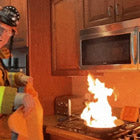 Fire
Fire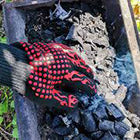 Safety
Safety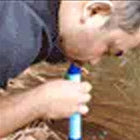 Survival
Survival Protection
Protection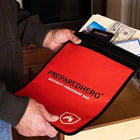 New
New
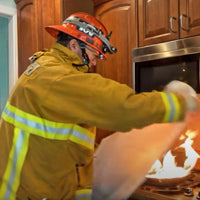 Fire
Fire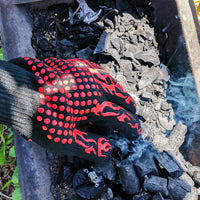 Safety
Safety Survival
Survival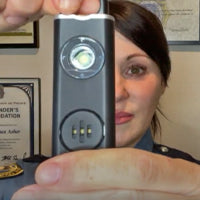 Protection
Protection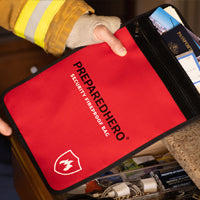 New
New
